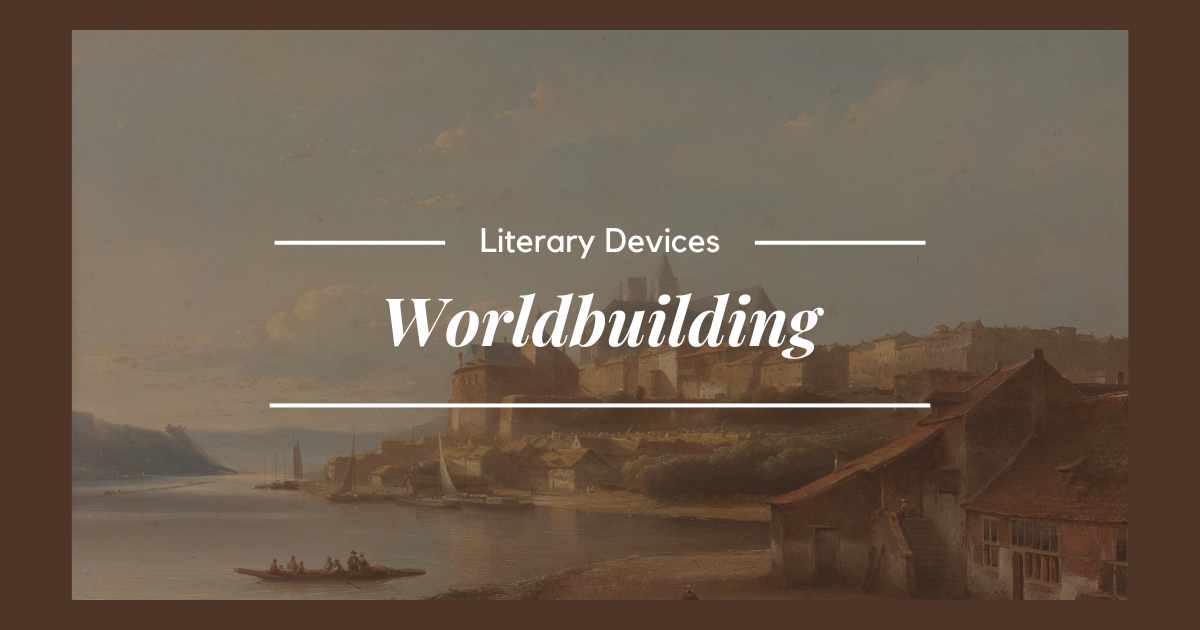If you read a lot of fantasy, you’ve likely experienced the two different types of worldbuilding. One type is full to the brim with information about the world, how it operates, with full histories and lore, and the other is more about atmosphere.
Each contributes a different vibe to the story, which means that if the author hopes to produce a specific effect, they’re going to choose the type of worldbuilding most conducive to that.
Let’s look more closely.
Hard worldbuilding is for immersion in the setting.
Hard worldbuilding emphasizes detailed, consistent, and logically structured fictional worlds, often drawing from real-world inspiration. You’re most likely to see this in high or epic fantasy, sci-fi, and even historical fiction. In the case of that last one, it’s less speculative worldbuilding, and more about accuracy in the depiction of the time the story takes place in.
Hard worldbuilding is usually:
- Detail-oriented – the world comes with intricate rules or structures. Not only does it have it’s own geography and magic, it comes complete with fully developed histories, politics, economics, and even languages
- Consistent – there’s an emphasis on coherence in the worldbuilding. The author meticulously constructs every aspect to make it both logical and believable
- Research-based – historical events and scientific principles often make their way into this kind of worldbuilding, especially if it’s inspired by real-world settings
Some potential drawbacks might be:
- Overwhelming detail – too much information that is not directly relevant to the plot or characters
- Inflexibility – it might limit creative freedom or make it difficult to throw in unexpected developments
- Exposition – as well as straight up info dumping, which can feel clunky or disruptive to the flow, keeping readers from getting immersed
Often when we think of hard worldbuilding, we think of the heavy hitters like Lord of the Rings or Game of Thrones. Another more recent example would be The Priory of the Orange Tree.
Soft worldbuilding is for immersion in the story.
Soft worldbuilding prioritizes atmosphere, emotion, and flexibility, allowing for greater narrative freedom and imaginative exploration. You will also see this in fantasy, particularly if it has a stronger character focus. It’s also prominent in magical realism, literary fiction, or any kind of surreal or symbolic fiction.
While these novels feature fantastical settings, the focus is primarily on evoking a sense of wonder and exploring themes rather than exhaustive worldbuilding detail.
Soft worldbuilding is usually:
- Atmospheric – these stories focus on mood and emotional resonance versus intricate detail. While the setting still plays a significant role, it often serves as a backdrop to the characters’ experiences and internal conflicts rather than being extensively developed in its own right
- Flexible – the author may leave certain aspects of the world vague or open to interpretation
- Character-centric – characters and relationships take the forefront over the world itself. The worldbuilding we do get is directly related to how it impacts the character or the story
It has some potential drawbacks as well:
- Lack of clarity – some things may be too ambiguous, leading to confusion
- Inconsistency – contradictions in the narrative are more likely when there are no strict rules to follow
- Underdeveloped settings – the setting may feel superficial or generic if the author doesn’t properly cultivate it
A lot fantasy or paranormal romances fall into the category of soft worldbuilding, like Bride, but also some other types of low fantasy, like The Ocean at the End of the Lane or The Giver.
Why should we know this?
Worldbuilding directly impacts our enjoyment of a story, depending on our expectations and mood. If you prefer the worlds you read about to be fully fleshed out on page, you’ll probably be frustrated by the lack of answers you get from a story using soft worldbuilding.
On the flip side, if you’re here to vibe but the vibes keep getting interrupted by information about the world’s trash collection system, you’ll probably be just as frustrated.
Knowing what you’re in the mood for can help you pinpoint your next read.
I would love to have you around! Subscribe below.
Check out some of my other recent blogs:








2 responses to “Soft vs. Hard Worldbuilding: What’s the difference?”
Is there a book sight that gives you a scale of what kind of world building a book has?
Good question! I haven’t come across one. The best source for me to gauge how intense the worldbuilding will be has always been reviews & recommendations.